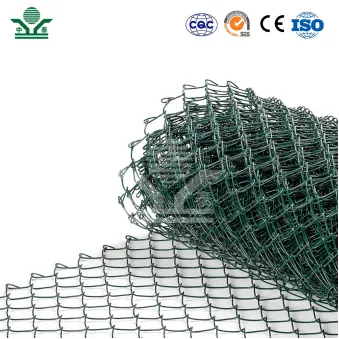Temporary Animal Fencing A Practical Solution for Livestock Management
In the world of agriculture and livestock management, effective fencing plays a crucial role in ensuring the safety and containment of animals. With various options available, temporary animal fencing has emerged as a practical and adaptable solution for farmers and ranchers. This type of fencing offers flexibility, ease of use, and cost-effectiveness, making it an attractive choice for many livestock operations.
The Need for Temporary Fencing
The reasons for employing temporary fencing are diverse. Farmers may require quick solutions for separating livestock during breeding seasons, creating grazing paddocks, or managing animals at events. Additionally, temporary fencing can be invaluable during emergencies, such as severe weather conditions or natural disasters, allowing for rapid adjustments to animal containment as needed.
Another situation that often calls for temporary fencing is when livestock are rotated among fields. This practice, known as rotational grazing, is essential for maintaining pasture health and promoting sustainable land use practices. Temporary fencing enables farmers to easily create new pasture areas while allowing old ones to rest and regenerate.
Types of Temporary Animal Fencing
There are several types of temporary fencing available, each designed to meet specific needs
. Some of the most common types include1. Electric Fencing Electric fencing is a popular choice among livestock owners due to its effectiveness in deterring animals from escaping or intruding. This type of fencing relies on a charger that delivers a mild electric shock to animals that come into contact with the fence. It is lightweight, easy to install, and can be set up in various configurations.
2. Polypropylene Fencing This type of fencing is made from durable, UV-resistant materials. Polypropylene fencing is typically available in rolls and can be set up quickly. Its lightweight design makes it easy to transport, and it's an excellent option for farmers looking for a temporary solution that can be reused multiple times.
3. Wire Fencing Lightweight wire fencing, such as farm netting or barbed wire, is another option for temporary setups. While often more labor-intensive to erect than other methods, wire fencing is readily available and can be effective for various livestock containment needs.
temporary animal fencing

4. Portable Panel Fencing These fencing panels can be moved and reconfigured easily, allowing livestock owners to create temporary enclosures quickly. Available in different sizes and materials—often metal or plastic—portable panels are well-suited for events, veterinary check-ups, or temporary grazing areas.
Advantages of Temporary Fencing
The benefits of temporary animal fencing are numerous. One of the most significant advantages is its versatility. Temporary fencing can be set up in various environments and is suitable for different types of livestock, including cattle, sheep, goats, and poultry.
Moreover, temporary fencing is typically cost-effective compared to traditional permanent solutions. Many farmers appreciate that they can achieve effective containment without the substantial investment required for industrial-grade fencing.
Ease of installation is another appealing feature. Many temporary fencing options can be set up by one person without the need for specialized tools or equipment. This aspect is especially beneficial for farmers who need to quickly adapt to changing conditions or manage animals in different locations.
Challenges and Considerations
While temporary fencing has its advantages, there are also challenges to consider. It may not provide the same level of security as permanent fencing, particularly concerning larger or more aggressive animals. Farmers must ensure that the materials used are suitable for their livestock to prevent escape or injury.
Weather conditions can also impact the effectiveness of temporary fencing. Heavy rains or high winds may compromise the integrity of lightweight setups. It’s essential to anchor fences securely and monitor them regularly for signs of wear or damage.
Conclusion
Temporary animal fencing offers a flexible and effective solution for livestock management. With several types available and the ability to set them up quickly, it meets the diverse needs of farmers and ranchers across various situations. By understanding the advantages and challenges associated with temporary fencing, livestock owners can make informed decisions that ultimately contribute to the well-being of their animals and the efficiency of their operations. Whether for emergency situations, pasture management, or special events, temporary fencing remains a valuable tool in the arsenal of modern agriculture.
-
Using Round Hole Mesh for Concrete Formwork Protection
NewsJul.09,2025
-
The Recyclability of Stainless Steel Mesh in a Circular Economy
NewsJul.09,2025
-
Steel Gratings in Green Construction Projects
NewsJul.09,2025
-
How Engineers Design Steel Structure Platforms for Maximum Safety
NewsJul.09,2025
-
Cable Mesh Railing for Rooftop Gardens and Terraces
NewsJul.09,2025
-
Aluminum Diamond Mesh: A Comprehensive Overview
NewsJul.09,2025
Subscribe now!
Stay up to date with the latest on Fry Steeland industry news.

